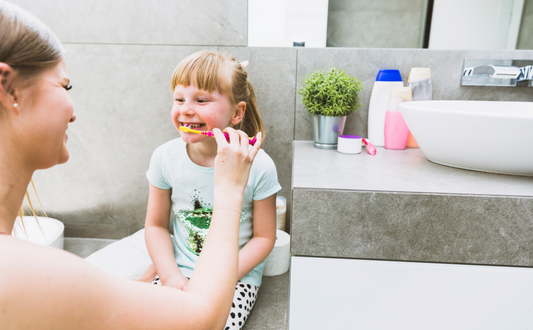Let's talk about something that affects millions of kids worldwide - Sensory Processing Disorder (SPD). This condition messes with how the brain processes and responds to sensory info, causing issues with attention, behavior, and social interaction for affected kiddos. If you're a parent of a child with SPD, you may be wondering how you can help support them to tackle the challenges of this condition. Read on...
Here's how you can help your cild with sensory processing disorder:
Understand your child's sensory needs
The first step in helping your child with SPD is to understand their sensory needs. Children with SPD may be over-sensitive to certain types of sensory input, such as loud noises or bright lights, or under-sensitive to other types of sensory input, such as touch or movement. Understanding your child's individual sensory needs will help you to create a supportive environment that meets their specific needs.
Create a sensory-friendly environment
Once you understand your child's sensory needs, you can create a sensory-friendly environment that supports their development. This might include providing a quiet space where your child can go to calm down when they are feeling overwhelmed (many kids with SPD report that our soothing sensory cuddle swing works a treat), using soft lighting and calming colors at home, and reducing unnecessary noise and distractions. You might also consider incorporating sensory toys and tools, such as noise-cancelling headphones or fidget toys, into your child's daily routine to help them regulate their sensory input.
Encourage sensory play
Sensory play is a great way to help children with SPD develop their sensory processing skills in a fun and engaging way. You can create a sensory play area in your home using materials like sand, water, or playdough. Encourage your child to explore and experiment with different textures and sensations to help them develop their sensory processing skills.
Develop a routine
Children with SPD often benefit from having a predictable routine that provides a sense of structure and stability. Try to establish a consistent daily routine that includes regular meal times, bedtime, and playtime. This can help your child feel more secure and reduce feelings of anxiety.
Seek professional help
If your child is struggling with SPD, it may be helpful to seek professional help from a pediatric occupational therapist or other healthcare provider who specializes in treating sensory processing disorders. They can provide strategies and techniques to help your child develop their sensory processing skills and manage their symptoms.
By understanding your child's sensory needs, creating a sensory-friendly environment, encouraging sensory play, developing a routine, and seeking professional help, you can help your child with SPD thrive and reach their full potential. Remember to be patient and consistent in your approach, and always prioritize your child's individual needs and well-being. With the right support and resources, your child can learn to navigate the challenges of SPD and lead a happy and fulfilling life.
PS. Check out our blog on ways to reduce sensory overload for more helpful tips.




